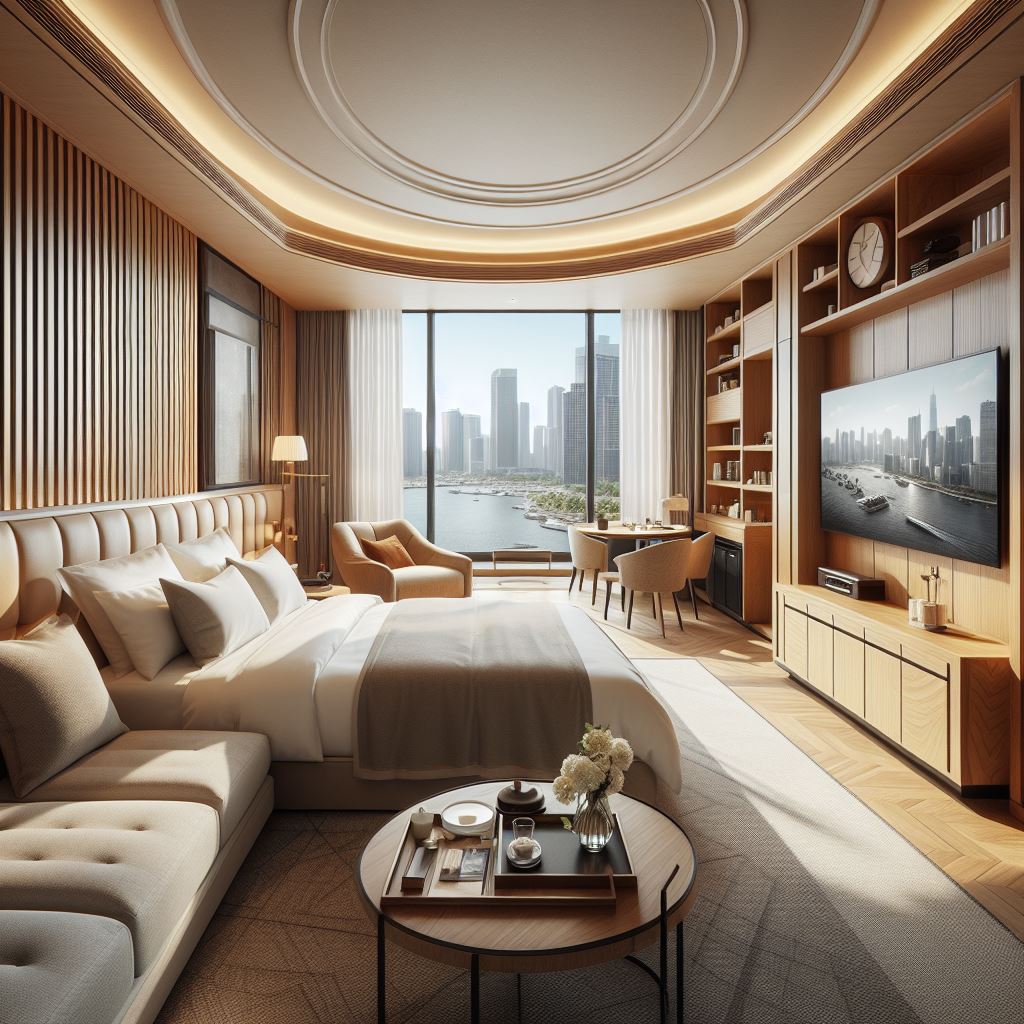
When stepping into a hotel that embodies the local culture through its design and artwork, there’s an immediate sense of place that you can’t quite put your finger on—a visceral reaction that feels both profound and intimately familiar. The harmonious integration of local art into hotel design is more than a passing trend; it’s an experiential journey that patrons embark upon, sometimes without even leaving the premises. This embodiment of cultural identity has become a cornerstone for many successful hotels, keen on providing an immersive experience that resonates with today’s traveler.
The Core of Cultural Integration in Hotel Design
Before diving into the nuances of incorporating art into hotel spaces, it’s essential to understand why this matters. The beauty of art, particularly when it is steeped in local traditions and motifs, lies in its storytelling power. Each piece serves as a narrative, a tactile connection to the heritage, struggles, triumphs, and ongoing evolution of a community. A finely crafted mural, an intricately woven tapestry, or a bespoke piece of furniture speaks volumes about the place it inhabits, often more eloquently than any history book could.
For hoteliers, tapping into this wellspring of cultural expression provides an unparalleled opportunity to differentiate their property in a highly competitive market. Not only does it create visual appeal, but it builds a narrative around the hotel, one that engages guests in a dialogue between the ancient and the modern.
Artistic Mediums and Their Cultural Narratives
Hotels have a rich palette of mediums at their disposal when it comes to showcasing local arts. These range from visual arts like painting, sculpture, and photography to more tactile expressions including textiles, ceramics, and woodwork. Each medium carries with it a historical weight and a specific context that can be harnessed to enrich the hotel environment.
Consider the impact of seeing a Cecil Skotnes carving detailed into the walls of a South African lodge or the intricate Ikat patterns adorning the linens in a boutique hotel in Uzbekistan. These are cultural signatures, leaving indelible impressions upon those who encounter them.
Paintings, often the most accessible form of art, reflect the styles and subjects important to the local culture. Whether it’s the vibrant hues found in Caribbean art, reflecting the zesty spirit of its people and the lushness of the landscape, or the earthy tones used in Aboriginal dot paintings, which tell the ancient stories of Australia’s indigenous inhabitants, such art forms provide a window into the soul of the place.
Sculpture, from grand statues to intricate carvings, bridges the gap between functionality and aesthetics. These three-dimensional pieces can serve as focal points around which hotel spaces are designed. They can be awe-inspiring, conversation-starting, or simply blend into the functional elements of the hotel, such as balustrades or columns that reflect traditional craftsmanship.
Photography, specifically that which captures the day-to-day essence of a locale, offers a snapshot in time, preserving fleeting moments and broadening our appreciation for the transient beauty of everyday life.
Architectural Choices That Celebrate Local Traditions
Beyond the portable arts, architecture itself is a monumental canvas for cultural expression. Hotels that seek to embrace local identity often look to traditional architectural motifs and techniques, modernizing them without losing the essence that links them to the past.
One cannot discuss this without mentioning the concept of bioclimatic design, which fuses architectural choices with local climates and landscapes. This isn’t just about resourcefulness or sustainability; it’s about echoing the vernacular building practices that are born from the land itself. For instance, a hotel in Bali might incorporate the alang-alang roofing found in traditional Balinese homes, offering both a nod to the native architecture and a practical solution for the tropical downpours.
The layout of spaces within the hotel can follow regional customs and living habits, like the central courtyards popular in Spanish and Moroccan homes, allowing guests to grasp the communal or private aspects that are characteristic of the local lifestyle.
The Enriching Impact on the Guest Experience
Exploring the layering impact of cultural art and architecture on the guest experience, it’s essential to recognize that today’s travelers often seek much more than luxury—they look for authenticity. When a guest encounters local culture through the thoughtful placement of art and design, they engage in a conversation with heritage. The impact of cultural art in hospitality is far-reaching, transforming a guest’s stay into an enlightening exchange that extends beyond the walls of their room.
For guests, the impact is profound—staying in a room adorned with locally sourced materials and handmade crafts can inspire a deep appreciation and curiosity for the traditions outside their door. A sensorial connection is forged when a visitor sips coffee at a reclaimed wood table similar to those seen in the region’s homes, or when they trace their hands along a piece of sculpture that has roots in the ancient artisan markets nearby.
The hospitality industry’s best practices are shifting towards creating these culturally immersive environments, as they are proven to leave longer-lasting memories, engendering a sense of connection that can lead to repeat visits and glowing recommendations. Moreover, it allows the hotel to transcend the role of merely a place to stay, becoming instead a place to learn, to feel, and to remember. The narrative of each locality is complex and layered, and hotels that succeed in capturing this essence offer their guests an invitation to partake in the living history and future of a destination.
Through the careful curation of local artwork and thoughtful architectural nods to tradition, hotels have the power to harness the stories, the aesthetics, and the spirit of their communities, offering guests an experience that truly cannot be found anywhere else. This practice does more than create beautiful spaces; it preserves and passes on the whispers of culture and history, ensuring they continue to resonate with each new visitor who walks through their doors.
















